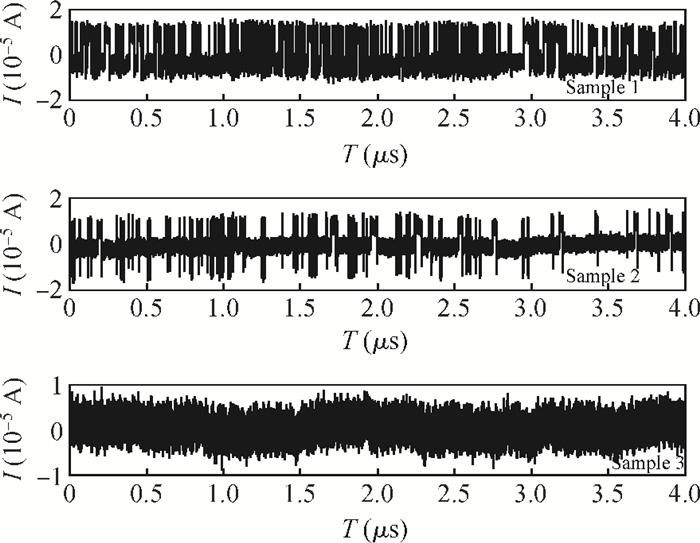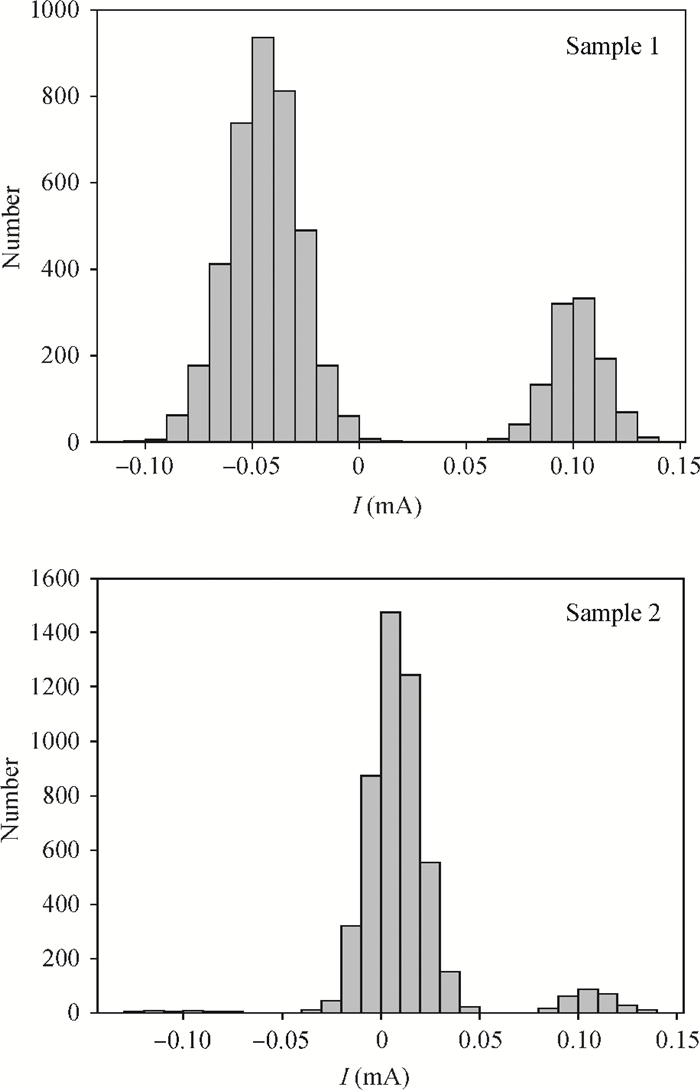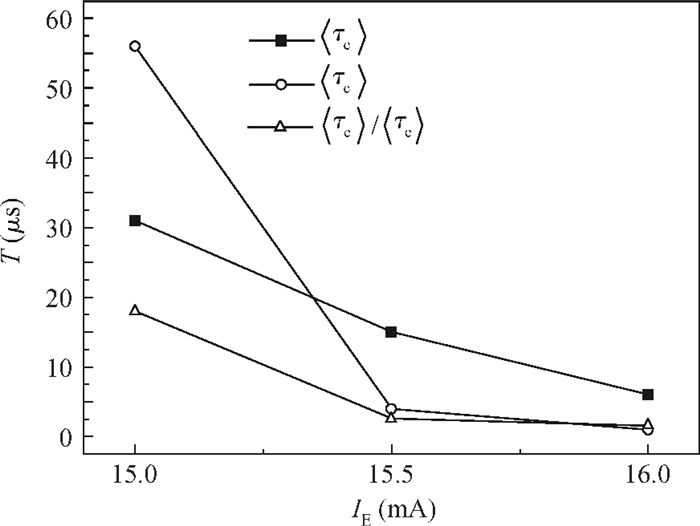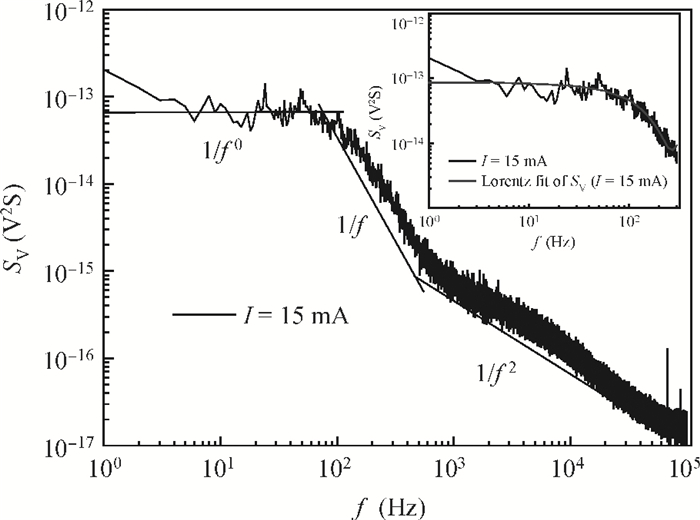| Citation: |
Yu'an Liu, Wenlang Lou. Correlation between dark current RTS noise and defects for AlGaInP multiple-quantum-well laser diode[J]. Journal of Semiconductors, 2014, 35(2): 024009. doi: 10.1088/1674-4926/35/2/024009
****
Y Liu, W L Lou. Correlation between dark current RTS noise and defects for AlGaInP multiple-quantum-well laser diode[J]. J. Semicond., 2014, 35(2): 024009. doi: 10.1088/1674-4926/35/2/024009.
|
Correlation between dark current RTS noise and defects for AlGaInP multiple-quantum-well laser diode
DOI: 10.1088/1674-4926/35/2/024009
More Information
-
Abstract
The correlation model between dark current RTS noise and defects for AlGaInP multiple-quantum-well laser diode is derived. Experimental results show that dark current RTS noise caused carrier number fluctuations at the interface of the heterojunction in the active region. According to this correlation model, the defect types are determined, and the defects' energy levels are quantitatively determined. The corner frequency of RTS noise power spectral density is analyzed. The experimental results are in good agreement with the theoretical. This result provided an effective method for estimating the deep-level traps in the active region of AlGaInP multiple quantum well laser diode.-
Keywords:
- random telegraph signal noise,
- defect,
- AlGaInP,
- laser diode
-
References
[1] Pralgauskait S, Palenskis V, Matukas J. Fluctuations of optical and electrical parameters and their correlation of multiple-quantum-well InGaAs/InP lasers. Advanced Experimental Methods for Noise Research in Nanoscale Electronic Devices NATO Science Series, 2005, 151:79 doi: 10.1007/1-4020-2170-4[2] Gonzalez M, Carlin A M, Dohrman C L, et al. Determination of band gap states in p-type In0.49Ga0.51P grown on SiGe/Si and GaAs by deep level optical spectroscopy and deep level transient spectroscopy. J Appl Phys, 2011, 109:063701 doi: 10.1063/1.3556748[3] Jones B K. Electrical noise as a reliability indicator in electronic devices and components. IEE Proc Circuits Devices Syst, 2002, 149:13 doi: 10.1049/ip-cds:20020331[4] Fronen R J, Vandamme L K J. Low-frequency intensity noise in semiconductor lasers. IEEE J Quantum Electron, 1988, 24:724 doi: 10.1109/3.188[5] Hu G, Li J, Shi Y. The g-r noise in quantum well semiconductor lasers and its relation with device reliability. Opt Laser Technol, 2007, 39:165 doi: 10.1016/j.optlastec.2005.03.007[6] Smith D R, Holland A D, Hutchinson I B. Random telegraph signals in charge coupled devices. Nuclear Instruments and Methods in Physics Research A, 2004, 530:521 doi: 10.1016/j.nima.2004.03.210[7] Gautier C, Orsal B, Devoldere P. Evidence of deep-level defection an MQW electroabsorption modulator through current-voltage and electrical noise characterization. IEEE J Quantum Electron, 1999, 35:1640 doi: 10.1109/3.798087[8] Palenskis V, Matukas J, Pralgauskait S, et al. Experimental investigations of the effect of the mode-hopping on the noise properties of InGaAsP. Electron Devices, 2003, 50:366 doi: 10.1109/TED.2003.809430[9] PralgauskaitS, Palenskis V, Saulys B, et al. Noise characteristics and radiation spectra of multimode MQW laser diodes during mode-hopping effect. 21st International Conference on Noise and Fluctuations, Toronto, Canada, 2011:301 http://ieeexplore.ieee.org/document/5994327/[10] Trabelsi M, Militaru L, Sghaier N, et al. Traps centers impaction silicon nanocrystal memories given by random telegraph signal and low frequency noise. Solid-State Electron, 2011, 56:1 doi: 10.1016/j.sse.2010.11.017 -
Proportional views





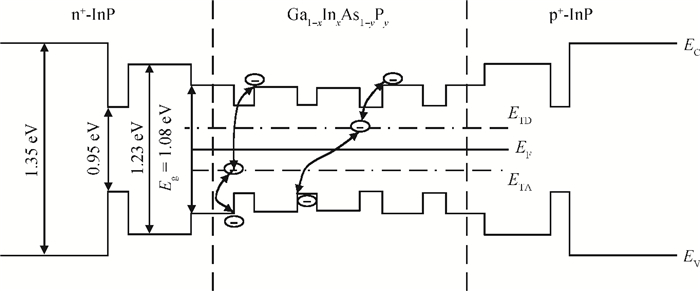
 DownLoad:
DownLoad:
